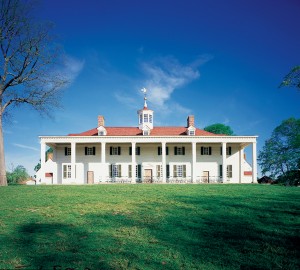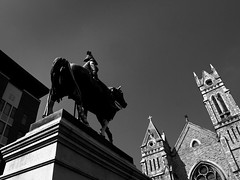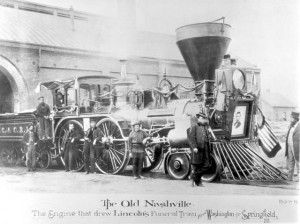As we approach President’s Day (Washington’s birthday) and Abraham Lincoln’s birthday (this Tuesday), it seemed fitting to look back and reflect on the history of presidential funerals. You will find that many funeral customs have changed over the years as well as the way people choose to honor presidents who’ve passed away.
When our first president, the great George Washington, died unexpectedly from epiglottitis at his Mount Vernon home in 1799, our young nation was shocked and unprepared. A grand ceremony was held soon after his death in Philadelphia—the nation’s temporary capitol at the time—while mock funerals were held across the country. Washington’s family held a modest funeral procession at Mount Vernon after finding his final requests written in his will. He wrote, “It is my express desire that my Corpse may be Interred in a private manner, without parade, or funeral Oration.”
Thomas Jefferson and John Adams died within hours of each other on the fourth of July in 1826, which was coincidentally the 50th anniversary of the signing of the Declaration of Independence. Only friends and family members were invited to Jefferson’s quiet ceremony, while over 4,000 people attended Adams’ funeral.
The first official state funeral was held in 1841 for William Henry Harrison, who was also the first president to die while in office. After serving only 32 days before dying from complications of pneumonia, he’s unfortunately famous now for serving the shortest term of any American president. Constituting the first established protocol for a presidential death, a religious service was held in the East Room followed by a procession to the Congressional Cemetery where he was buried.
When Abraham Lincoln was assassinated in 1865, advances such as the railroad and telegraph allowed for people across the country to learn of his death quickly and mourn at roughly the same time. Lincoln was the first president to have his casket placed in the United States Capitol Rotunda for a public viewing. Millions witnessed his funeral procession in D.C., while many more would get a glimpse of his casket as it traveled from the capitol, through New York and finally to his hometown in Springfield, Illinois.
While many continued to follow the funeral tradition set by Lincoln (including William McKinley and John F. Kennedy), two state funerals were held after Ronald Reagan’s death—one in D.C. and one in Simi Valley where he died from complications of Alzheimer’s. He was later interred at the Ronald Reagan Presidential Library.
Naturally, it is shocking and overwhelming when a president dies while in office. The grief can be just as intense when an admirable former president passes away many years after they’ve served. Whichever the case, traditional state funerals and days of national mourning help to unite Americans in solace and reflection.
Sources:
State Funerals in the US — http://en.wikipedia.org/wiki/State_funerals_in_the_United_States

 Presidential Deaths and Funerals
Presidential Deaths and Funerals





 ”The Snow Sister” Directed by Cecilie Askeland Mosli
”The Snow Sister” Directed by Cecilie Askeland Mosli
 First the Wealth Gap, Now the U.S. Has a Growing Health Gap
First the Wealth Gap, Now the U.S. Has a Growing Health Gap
 “Songbird” by Fleetwood Mac
“Songbird” by Fleetwood Mac














